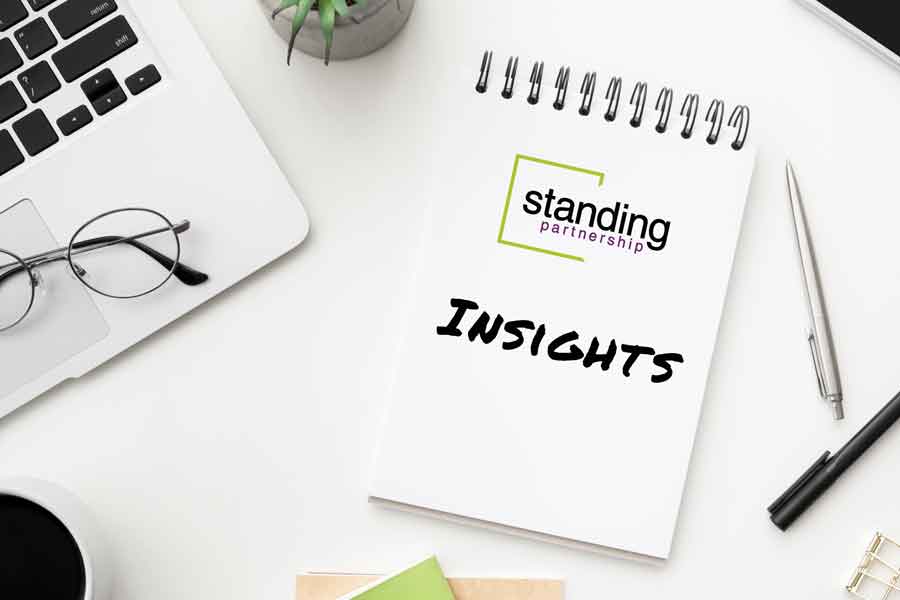Navigating the Alphabet Soup of Choosing a Sustainability Framework
Choosing the best sustainability framework for your company can be challenging but ultimately comes down to what information your stakeholders need and how they are most comfortable accessing it.
Sustainability reporting has evolved from a “nice to have” to a “must have,” particularly for publicly traded companies and those in highly-regulated industries. And a fluffy corporate social responsibility report about your community impact isn’t enough anymore. Investors, NGOs, customers and employees expect companies to report specific data about their environmental impact, workforce makeup, community engagement and economic performance. Using the best sustainability framework for your needs will set you up for success with your stakeholders.
Implementing a sustainability reporting framework helps companies organize their reporting, and enable investors and other stakeholders to compare the company’s performance against its peers. Yet even companies that have been reporting for years are becoming overwhelmed by the number of frameworks out there.
Trying to figure out which reporting framework is best for you? Here’s a quick overview of the most common sustainability reporting frameworks used in the U.S.:
- GRI: The Global Reporting Initiative standards are the most-widely used reporting framework globally. It is incredibly thorough, consisting of 34 possible topic areas and multiple disclosure options within each. But it’s not GRI’s intention for companies to report on all of these – instead, they encourage organizations to select the topics and disclosures that are most material (matter most) to your business and your stakeholders. GRI provides guidance on how to determine material topics as well as how data should be collected, which can be very helpful for companies who are just starting their journey.
- SASB: The Sustainability Accounting Standards Board are the preferred reporting standards for the investor community. Earlier this year, BlackRock CEO Larry Fink called on all publicly traded companies to report using SASB, as more investors and analysts are evaluating how companies are handling sustainability issues before making investment decisions. SASB sets specific standards for each industry, based on the topics that are most relevant to your business. Many of these standards align with GRI disclosures, so companies often report using GRI and include a SASB index at the end of the report.
- <IR>: The International Integrated Reporting Council created the International Integrated Reporting Framework, or <IR>, in 2013. It seeks to better communicate how an organization’s strategy, governance, performance and prospects help it create short, medium and long-term value. These reports are primarily geared toward global investors, lenders and insurers – similar to SASB – so it wasn’t surprising when SASB and IIRC announced in late 2020 that they will merge into a unified organization called the Value Reporting Foundation.
- TCFD: The Task Force on Climate-related Financial Disclosures is a bit newer to the scene, but has grown popular as the financial sector becomes more intentional about considering climate-related risks when investing in a company. This is an important framework to consider if your business has the potential for significant environmental impact, such as manufacturing, energy, transportation, mining and agriculture. Because this framework only covers climate disclosures, companies should also use GRI or SASB to provide a more comprehensive overview of their sustainability efforts in areas beyond climate.
- CDP: The Carbon Disclosure Project focuses on only one prong of sustainability – environmental impact, particularly related to climate, water and forests. It tends to be most relevant to industries that operate under environmental regulations, and also is often used by cities, states or other government entities. Like SASB, the CDP questionnaires are customized based on your industry. If you report using CDP, you’ll also be in alignment with the TCFD recommendations.
- SDGs: The Sustainable Development Goals were developed by the United Nations as a blueprint to a more sustainable future by 2030. The 17 goals cover topics like poverty, health, equality, clean water and climate. You’ll often see the goal icons sprinkled throughout sustainability reports to show how each initiative ladders up to these global goals. Like TCFD, companies typically don’t put out an “SDG report;” instead, it is another overlay to apply to the comprehensive sustainability report.
- There are even more frameworks not included in this list. Many American utilities follow the EEI/AGA template from the Edison Electric Institute and American Gas Association. Higher education institutions often use STARS, the Sustainability Tracking, Assessment & Ratings System. If you operate in an industry with a customized reporting framework, it may be best to use that as the primary guidance for your report and overlay one or more of the other frameworks based on your stakeholders’ needs. For example, many utilities report using EEI/AGA, but also complete CDP questionnaires and include SASB and/or TCFD indexes to meet the needs of their investors.
Choosing the right sustainability reporting framework ultimately comes down to what information your stakeholders need, and how they are most comfortable accessing it. For some companies, that may mean incorporating a combination of frameworks into your report. Several reporting organizations are collaborating to make this process easier by aligning their approaches and someday moving toward a single global set of reporting standards. Until then, companies will have to wade through the alphabet soup and piece together the frameworks that are relevant to them.
Looking to start or grow in your sustainability reporting journey? We’d love to help! Contact us at: inquiries@standingpartnership.com

